I took a wee break from blogging over the last few weeks, but the truth is I didn’t really take a break from much at all. I’ve continued to potter away on the farm in between summer visitors and starting a new job.
So, to catch us up a little bit, I figured I’d talk about 5 things I did this summer.
Mulched the cherries
There’s a truly obscene number of Taiwan cherry trees in our native bush. They were originally planted locally as ornamental trees (because they are very pretty), but the birds love the fruit. Which means they transport and poop out the seeds. Leading to an incredible number of pest trees for us to chop down.
So between September and December, we got out there and cut a few down each week, poisoning the stumps as we went. We piled up the wood, and just before Christmas dragged it all out onto our paddock for mulching. It felt like a very small pile compared to the effort to collect it.
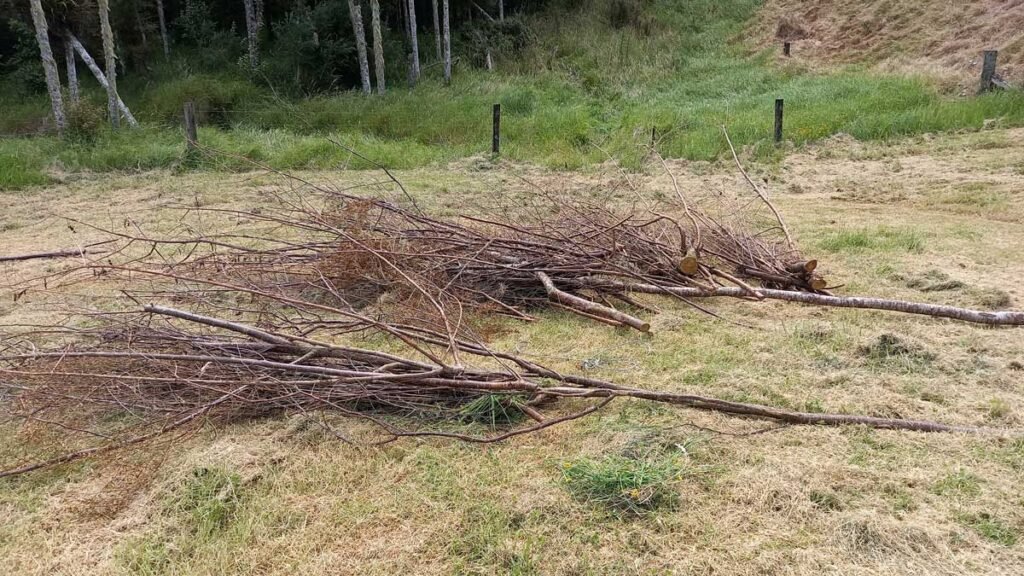
Dad bought up his mulcher the next morning and we spent a surprisingly short amount of time turning our months of work into a fairly decent pile of wood mulch.

Most of the mulch is still sitting in the paddock, but we’ll use it to refresh our grey water system once we’ve done a bit of maintenance later in the summer.
Planted catnip
The beds I planted garlic in last year had got overrun with weeds. It took a few mornings of weeding, but I got to work planting catnip over New Year.
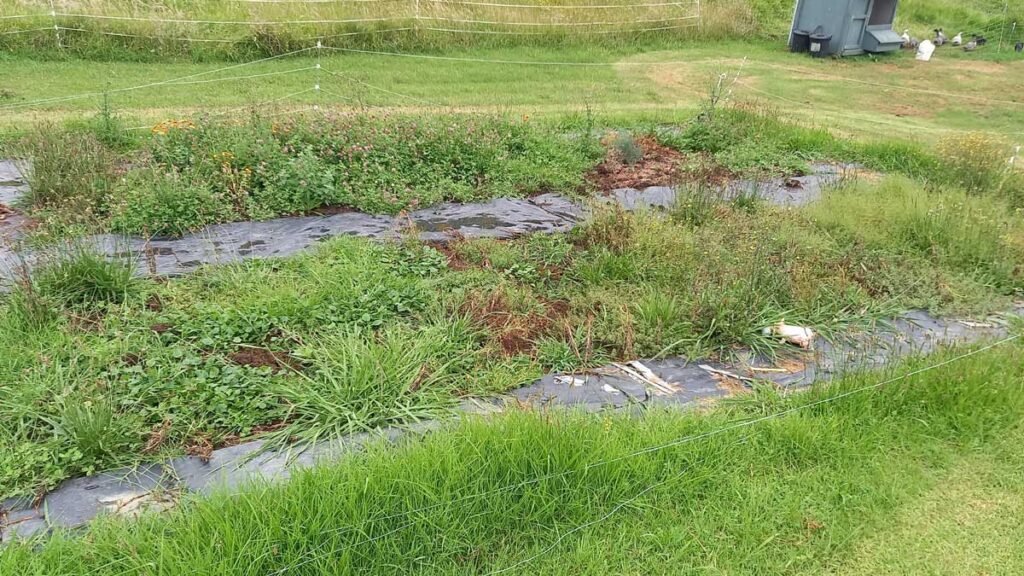
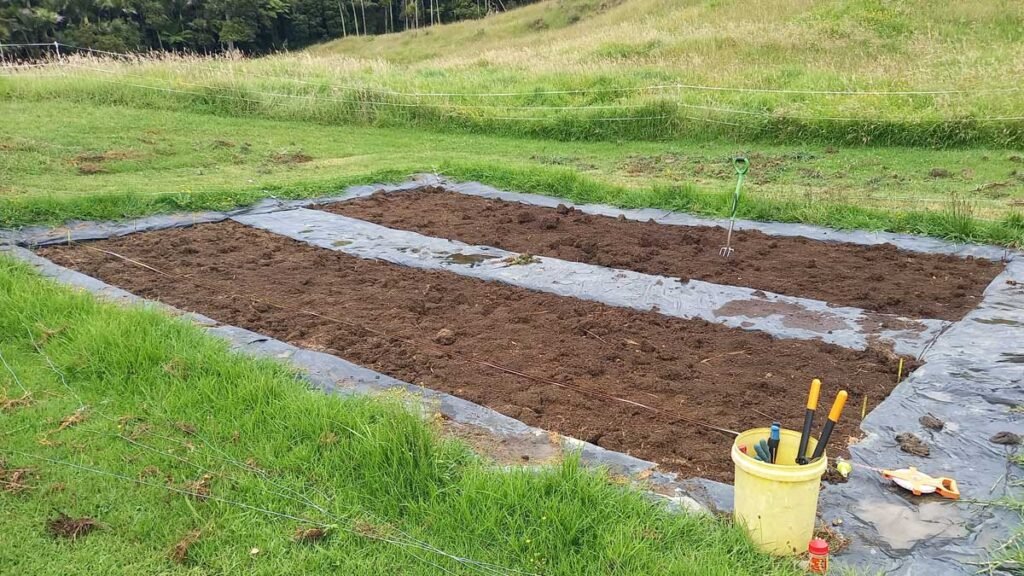
Each bed holds 16 catnip plants. I’ve been transplanting volunteer seedlings from the garden. I’ve got one and a half beds planted up so far, with another bed ready to plant and one bed still to clear out.
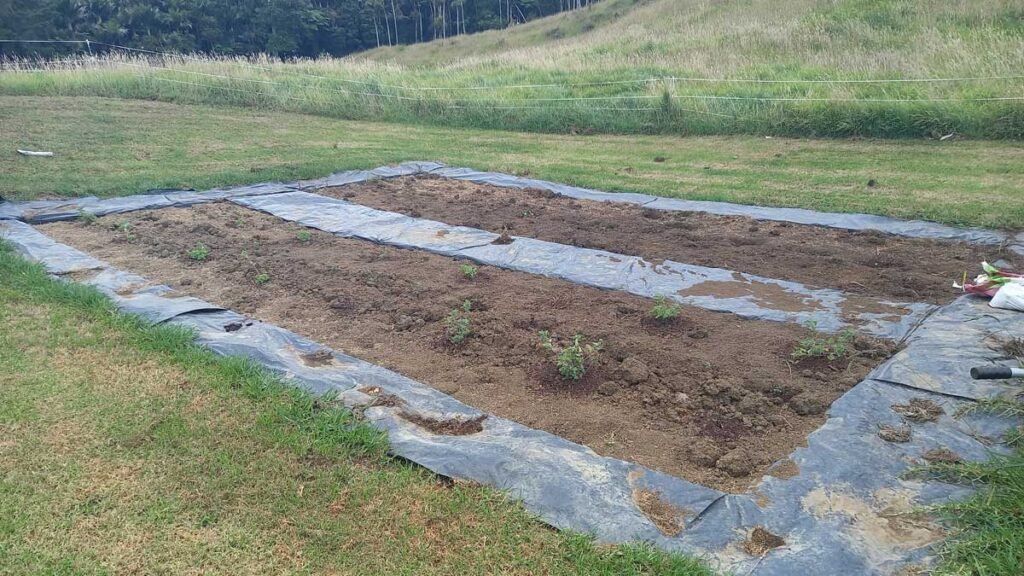
It looks a bit rough now, but it time the plants will grow very large, forming bushy rows. In total, I should end up with 64 plants in these beds, which will super-charge my catnip production next season.
In the meantime, the 2021-22 season catnip is now on sale in the store.
Finished covering the berry house
A few months ago the cover of our shadehouse exploded quite dramatically in a storm. After removing the totalled cover, I replaced it with bird net. A few people have remarked on how good it looked.
But I always planned to add some shade and wind protection at one end. It was just something that took far too long to get around to. But as summer got dry, I found myself needing to give my plants a good soak. While I let them bathe in water, I took the time to get a few rolls of windbreak on.
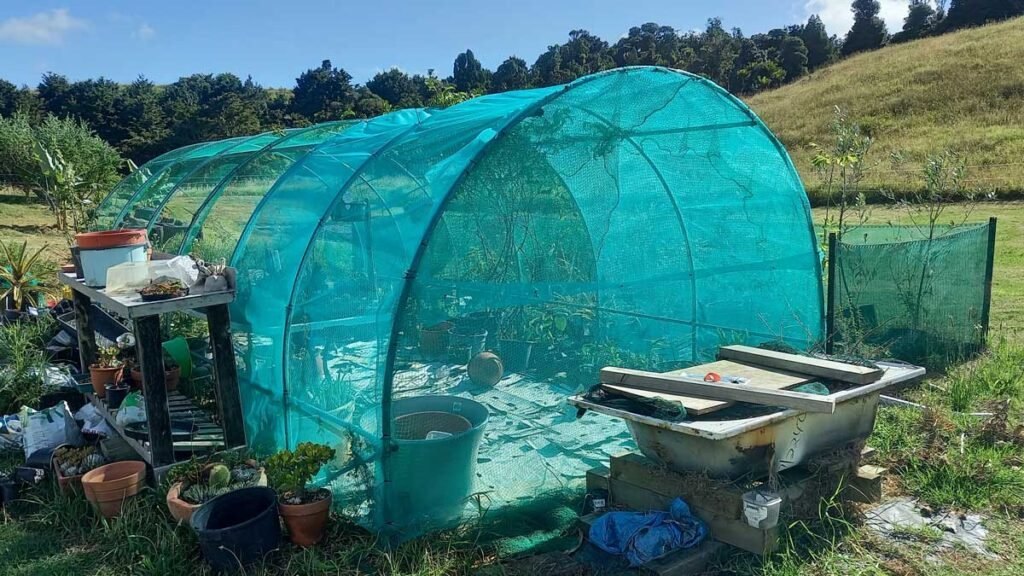
The end with the windbreak is noticably cooler, so I’ve moved my natives and shade-lovers down there. We lost a few trees in the heat, so hopefully this will improve survival.
Processed endless little garlics
Last year’s garlic season was not a total failure, but it wasn’t my best year either. Instead of perfect seed garlic, I pulled up tiny bulb after tiny bulb.
It was disappointing. I barely have enough seed garlic to keep my varieties going myself, let alone sell any this year. But I was left with about 4kg of garlic I needed to do something with.
So after drying it in our shipping container, I found myself spending my evenings watching The Golden Girls and processing garlic. This involves removing the tops and roots, and checking the bulb is fat and happy, suitable for sale.
A bit later on I spent some time trying to learn how to braid garlic with the stuff I hadn’t processed yet. I’m planning to take them to a local market at the end of the month, and whatever doesn’t sell there will be online the next day.
Released the natives
A fairly physically-demanding job, I can only do this in the early morning and evening so it took a few days, and is still ongoing.
Over the last couple of years, we’ve planted most of our natives straight into grass. Which means a few times a year, I need to pull that grass back and stop it from choking the trees.
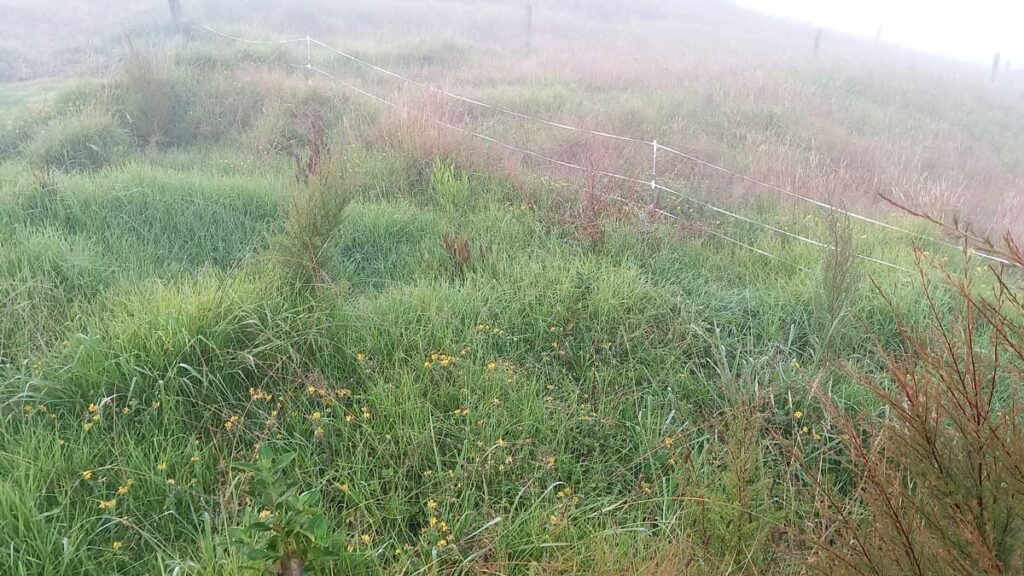
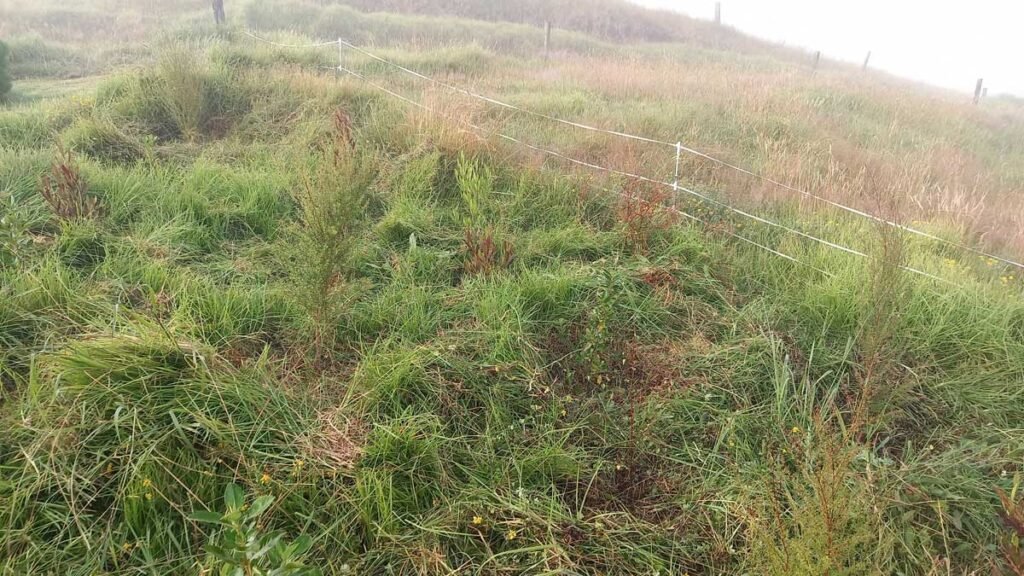
I tried to do it with a weedeater once and we lost two trees, so I have to do this job by hand, using my trusty Niwashi to cut back the kikuyu and weeds around each tree.
There’s often a burst in growth whenever I do this, so it’s well worth the trouble, but it’s always sweaty work!

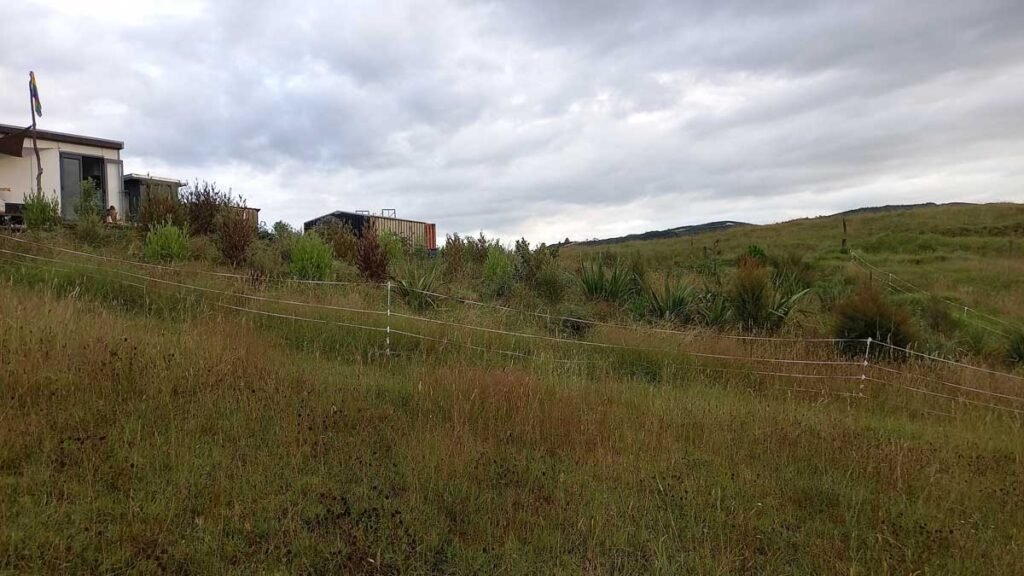
Eventually, the trees should shade out the grass and replace it with their own leaf-litter – the oldest trees in this planting are 3 years old and beginning to do that. But each winter when I plant trees, I keep in mind that I’m going to have to do this a couple of times a year for 3 or 4 years before I can let them go. The maintenance work is very much part of the consideration when thinking about how much we can plant each year.
Summer’s a good time to do it – once the seedheads begin drying off and going brown. It takes a bit longer for everything to bounce back and gives you a decent break until the next release in winter.
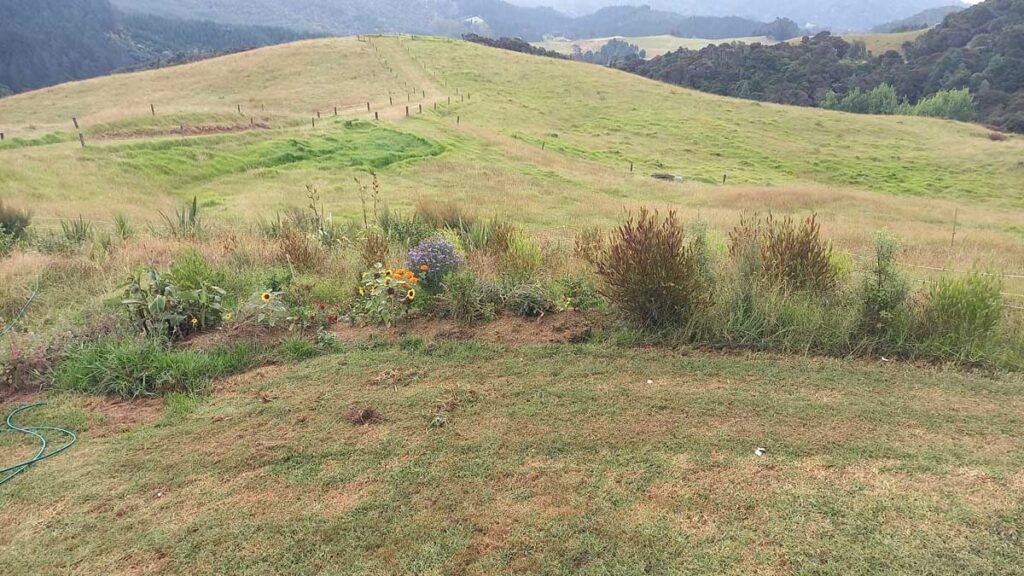
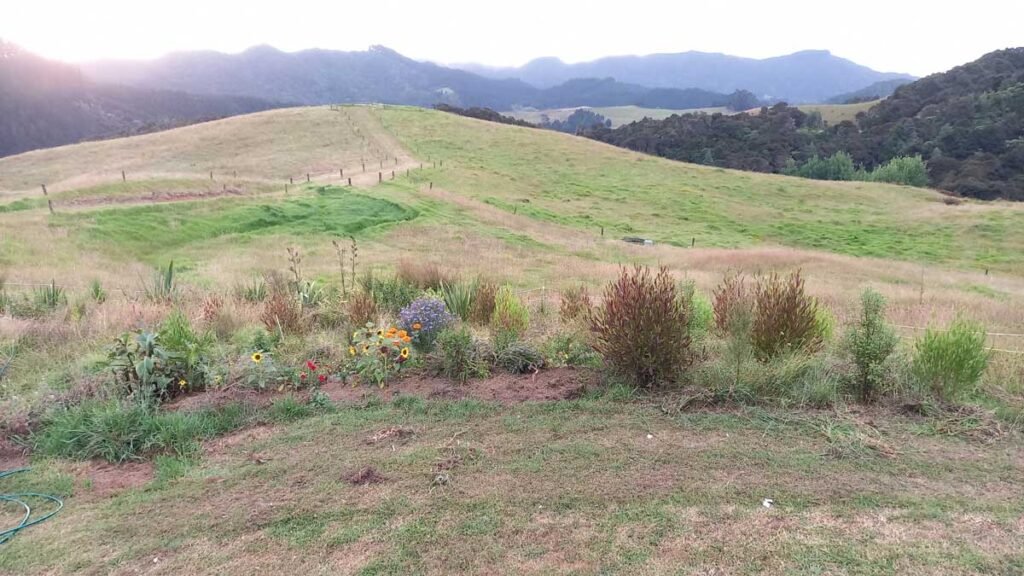
The life-sentence block
Even with these jobs done, there’s always more to do here. There’s still more catnip to plant and more garlic to process. The plants need moving and reorganising. I’ve still got more natives to release. And this is hardly a comprehensive list of everything I’ve done or need to do. This property is a never-ending to-do list.
But bit-by-bit, we’re getting there. Our trees are maturing. We are learning. And we are doing.



I said I would let you know how my garlic went. I pulled them up just after xmas and I got quite big bulbs I think. I dont seem to be able to post a picture here so I will put it on twitter.